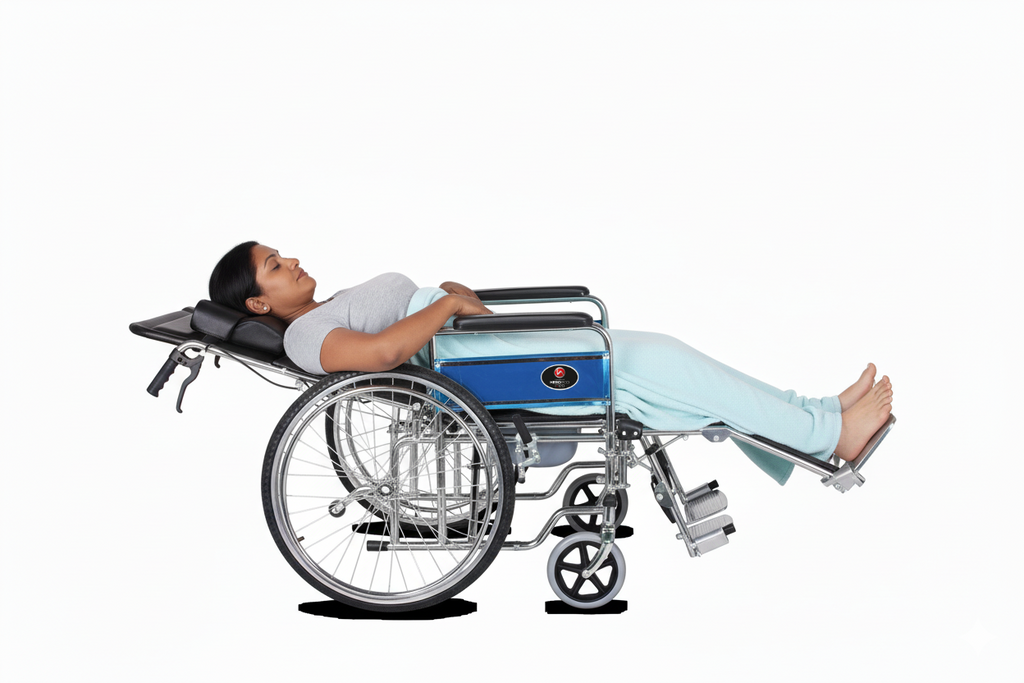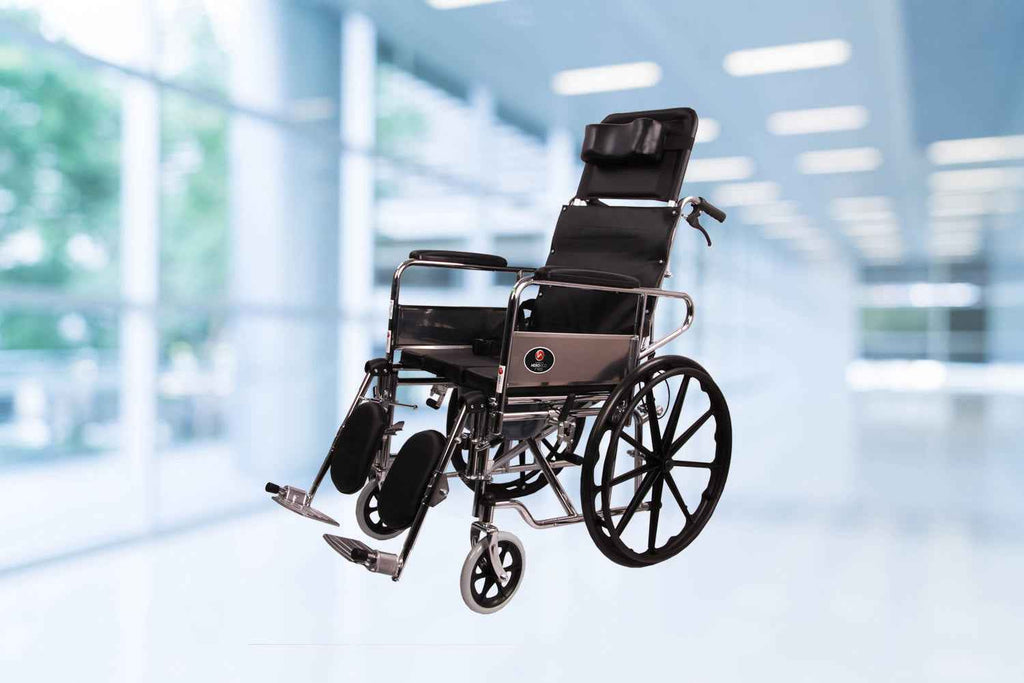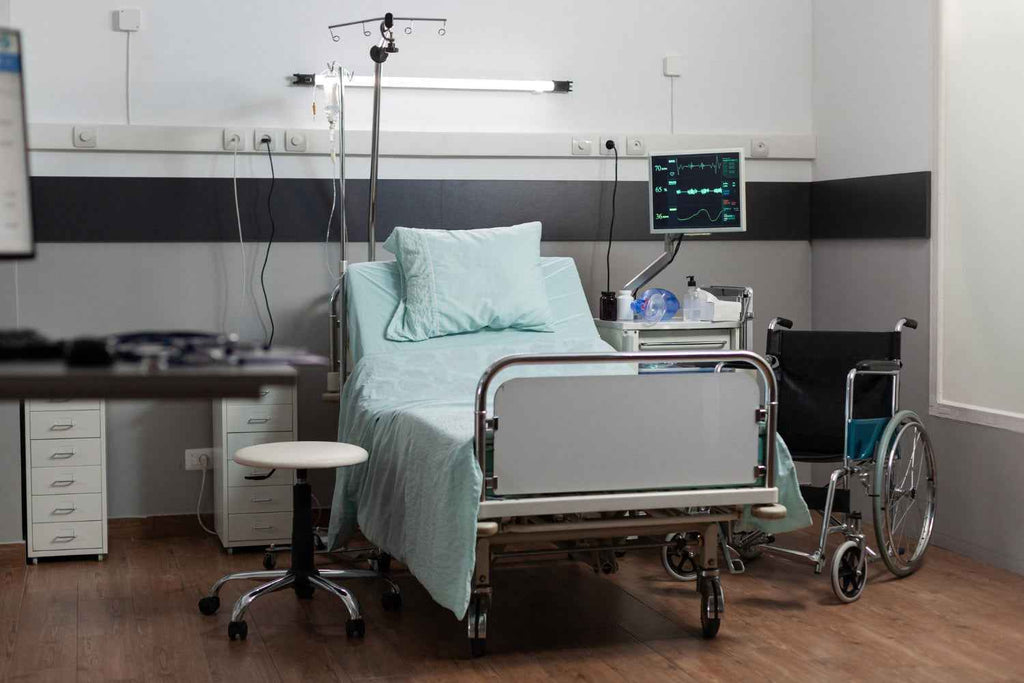
A Complete Guide to Reclining Wheelchairs and their Medical Advantages

Mobility is essential for independence and quality of life. For patients and seniors who rely on wheelchairs, good design can greatly improve daily comfort and long-term health. Among the various innovations in mobility aids, reclining wheelchairs stand out for their flexibility and health benefits.
Unlike standard wheelchairs that have a fixed seating position, reclining wheelchairs let users adjust the backrest to different angles; some can even recline fully to 180°. This feature is perfect for those who spend long hours in their wheelchair, as it boosts comfort and provides necessary medical support.

What is a Reclining Wheelchair?
A reclining wheelchair is a specialized mobility device with a backrest that tilts backward. It often includes elevating leg rests and detachable headrests. This design allows users to rest in semi-reclined or fully reclined positions, reducing the need to transfer frequently between the wheelchair and a bed.
Modern reclining wheelchairs combine ergonomic design with sturdy construction and safety features. They are suitable for hospitals, rehabilitation centers and home care.
Reclining Wheelchairs: Built for Comfort and Safety
Reclining wheelchairs are designed for both patients and caregivers, as it has the following features:
- Recline up to a 180° supine position
- Detachable commode bucket for convenience
- Headrest with neck support for long-term comfort
- Attendant brakes for safe and controlled recline
- Foldable chrome-finish frame for durability and easy storage
- Adjustable footrests for personalized support

Medical Advantages of Reclining Wheelchairs
1. Pressure Ulcer Prevention and Relief
Sitting for long periods can create pressure on the buttocks, hips and lower back, leading to painful bedsores. A reclining wheelchair helps distribute body weight and relieve localized pressure, significantly reducing this risk.
2. Improved Circulation and Reduced Swelling
Reclining and elevating the legs promotes better blood circulation. This helps patients with edema, diabetes, or circulation issues by reducing swelling and discomfort in the lower limbs.
3. Respiratory Benefits
For patients with lung conditions or weak respiratory muscles, reclining can help expand lung capacity. This makes it easier to breathe, supports oxygen intake and may reduce fatigue during extended sitting.
4. Spinal and Postural Support
Seniors or patients with spinal cord injuries and neuromuscular disorders benefit from proper spinal alignment. Reclining wheelchairs offer customizable angles that reduce strain on the spine, neck and hips.
5. Digestive and Feeding Assistance
A slightly reclined position helps with digestion and makes feeding easier for patients who cannot sit up for long. Caregivers find this especially useful during mealtimes or after giving medication.
6. Convenience for Caregivers
Caregivers often need to reposition patients for cleaning, physiotherapy, or medical tasks. A reclining wheelchair makes this process safer and less stressful, minimizing the need for multiple transfers.

Caregiver Perspective: Why Reclining Wheelchairs Matter
For caregivers, moving a patient from a bed to a chair multiple times a day can be physically demanding and risky. Reclining wheelchairs reduce the need for these transfers, helping caregivers manage patient comfort and care more efficiently. This not only saves time but also lowers the chances of accidental falls or injuries.
Who Can Benefit from a Reclining Wheelchair?
- Elderly users needing long-term comfort and independence
- Patients recovering from surgery who cannot sit upright for long
- Individuals with neuromuscular disorders like ALS, MS, or muscular dystrophy
- Spinal cord injury patients needing posture support and pressure relief
- Bedridden patients needing mobility without constant transfers
- Patients with respiratory or circulatory problems who benefit from reclined positions
Key Features to Look For in a Reclining Wheelchair
- Range of Recline – Choose models that recline up to 180° for maximum flexibility.
- Detachable Headrest and Leg Rest – Provides extra comfort and allows customization.
- Strong Frame and Weight Capacity – Sturdy construction ensures safety (usually supports 100 kg).
- Cushioned, Fire-Retardant Upholstery – Antibacterial, easy to clean and durable.
- Foldability and Portability – Important for home use and travel convenience.
- Braking System – Attendant brakes enhance safety during recline adjustments.
This wheelchair is especially useful for hospitals, rehabilitation centers and at-home patient care, offering both mobility and medical benefits in one product.
Final Thoughts
A reclining wheelchair is more than just a mobility aid; it serves as a medical support system. By combining mobility, posture control and health benefits, these wheelchairs help users live with greater independence and dignity while easing the workload for caregivers.
As India's need for better mobility aids grows, reclining wheelchairs are becoming an important option for seniors and patients across the country.


















